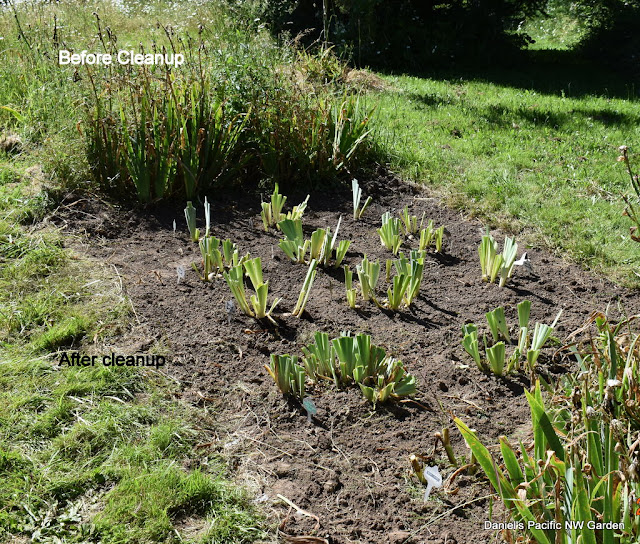It's been a few days since transferring the feral honeybee swarm to the top bar hive. They seem OK. One mistake I made with previous attempts, was I was too nervous about opening the hive. By not doing so, the honeybees built comb across the bars instead ofjust on the bars, and it became impossible to open the hive without making a big mess and ruining a lot of the comb. This time, I want to do it right. I opened the hive and examined most of the bars, with comb being built on about 6 bars now. A couple have a fairly large comb although not yet filling the entire space..
 |
| Me at top bar hive, with newly made comb. 6.26.2020 |
 |
| Close up of comb with honeybees. 6.26.2020 |
Years ago when I was trying to support honeybees as well as native pollinators, I grew some milkweed from seeds. It hasn't spread much, which is good, but grows nicely each year. The honeybees like these fragrant flowers. I also moved some milkweed to woodlot, which is too weedy for much growth of desired plants and is on my list to clean up. Meanwhile there are these nice ones, which get no watering at all throughout the summer, and are under the fig trees.
 |
| Honeybee on Milkweed Flower. 6.26.2020 |
Honeybees also like alliums. I have a lot of chives and garlic chive, which they like a lot.
 |
| Honeybee on garlic chive blossom. 6.26.2020 |
Honeybees also like linden flowers. Again, when I was first thinking about bee keeping, I planted four European linden trees. They are a nice size now, about 15 feet tall, maybe 20 (who knows) and just beginning to bloom. This is nice timing.
 |
| Flowers on Greenspire European Linden. 6.226.2020 |
Then there is the wildflower meadow. This has devolved to mostly daisies and dandelions, with a handful of dianthus and California poppy. Still, there is nectar and pollen to be had. In other areas, coincidentally, we had decided only to mow the periphery. In those areas there is a lot of white clover, as well as dandelions and daisies. We also have some areas with lots of herbs, including a big patch of lavender, sage, and rosemary, and I grow a fair number of herbs.
Some of the neighbors are also using a minimal mowing philosophy, which may mean more forage for any bees in the area.
 |
| Wildflower meadow area. 6.26.2020 |


























